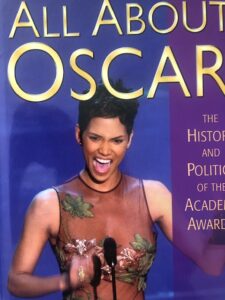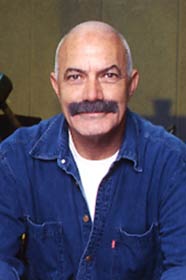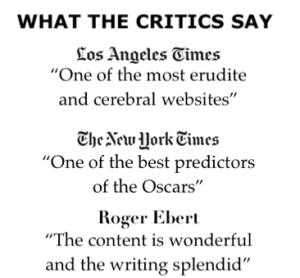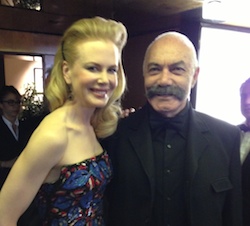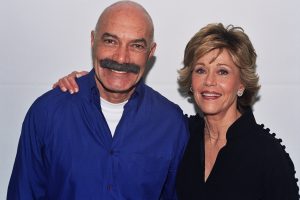Brilliant Actor in Oscar-Winning ‘Apocalypse Now’ and Oscar- Nominated ‘The Rose,’ Dies at 86
A Coppola favorite since The Conversation, the Oscar nominee also starred in the ill-fated One From the Heart and Hammett.

Forrest died Friday at his home in Santa Monica after a long illness.
On Twitter, Midler said Forrest was “a remarkable actor, and a brilliant human being, and I was lucky to have him in my life. He was at peace.”
The first of two GoFundMe campaign were created in September to help him with health care expenses.
Though rarely cast as a leading man, Forrest enjoyed a long career that included such films as Coppola’s The Conversation (1974) and Tucker: The Man and His Dream (1988), The Missouri Breaks (1976), It Lives Again (1978), Valley Girl (1983), The Stone Boy (1984), The Two Jakes (1990), Chasers (1994), Lassie (1994), Point Blank (1998) and The Quality of Light (2003).
His last onscreen appearance was in the 2006 remake of All the King’s Men, starring Sean Penn.
Forrest also left a lasting body of television work highlighted by an intense performance as the title character in the 1974 CBS telefilm Larry, the true-life story of a man with average intelligence who was institutionalized because he was thought to be mentally deficient.
He received critical acclaim for his portrayals of Petronius on Quo Vadis? (1985), the outlaw Blue Duck in the 1989 Lonesome Dove miniseries and the private investigator Lomax on the 1990 BBC miniseries Die Kinder. He also played Captain Richard Jenkins in 1987 on the first five episodes of 21 Jump Street.
“They told him that his movie debut as an 18-year-old Indian boy in When the Legends Die in 1973 would make him a star; they praised him as Cindy Williams’ enigmatic, deceptive lover in The Conversation; they assured him that he would get an Emmy nomination as Larry, a normal boy warehoused in a mental hospital as retarded.
“They told me to hire a public relations firm to try to get an Emmy. There was no way I could do that. It goes against my grain to buy ads. I don’t want to buy a prize. I want someone to give me one. Who wants a prize if you have to hustle it?”
It appeared as if Forrest’s fortunes were going to turn in 1979 with the releases of Apocalypse Now and The Rose, as his roles in those films couldn’t have been more different.
My Oscar book:
In Apocalypse Now, Coppola’s indictment of the Vietnam War, Forrest portrayed the unassuming New Orleans native Jay “Chef” Hicks. On his way to studying cooking in Paris when he was drafted, the last place Chef wanted to be was in the middle of a Southeast Asian jungle.
The crazier things got, the more on edge Chef became — evidenced by his reaction to an encounter with a tiger. “I didn’t come here for this, I don’t fucking need this. I didn’t get outta the eighth grade for this, man. … All I wanted to do is fucking cook, I just wanted to learn to fucking cook. All right, it’s all right, it’s gonna be all right … never get outta boat … bye tiger, bye tiger …”

The Rose featured Midler in her feature debut playing Mary Rose Fisher, a rock diva addicted to hard living, alcohol and drugs. Patterned after Janis Joplin, the role was tailor-made for Midler’s larger-than-life persona. It was Forrest’s Huston, as her grounded, straight-talking limo driver who tries to save her from going over the edge, that perfectly balanced the rocker’s extravagant excesses. (Primus was in the movie as well.)
Forrest was hailed for his performance, receiving a Golden Globe nomination as well as the Oscar mention, but he lost to Melvyn Douglas of Being There in both races. The National Society of Film Critics did honor him as best supporting actor for his work in those 1979 movies.
Forrest’s biggest fan could have been Coppola. After The Conversation and Apocalypse Now (and later in Tucker), he made the actor the romantic hero in One From the Heart (1981).
An ambitious attempt to re-create the lavish musicals of a bygone Hollywood era, the Las Vegas-set film featured Forrest and Teri Garr as a couple re-examining their relationship on their fifth wedding anniversary. Restlessness and complacency lead them to seek passion with strangers played by Nastassja Kinski and Raul Julia.
Coppola opted to shoot One From the Heart entirely on the soundstages of his newly opened Zoetrope Studios in San Francisco. He spent millions creating a casino-lined street and a portion of Vegas’ McCarran Airport, complete with runway and jet airliner. As the budget grew, so did Coppola’s battles with Paramount; ultimately, the studio pulled its support, and One From the Heart turned out to be one of the filmmaker’s biggest failures.
Forrest’s next chance for stardom came when he played the title character in the noir drama Hammett (1982). Directed by Wenders (and with Coppola as executive producer), the film saw legendary writer Dashiell Hammett plying his detective skills to solve a mystery.
As with One From the Heart, there seemed to be more intrigue behind the scenes than on the screen. Wenders clashed with Warner Bros. over the film’s direction, and it was left to Coppola to keep the peace. Much of the movie was reshot. Brian Keith and Ronee Blakley were replaced by Peter Boyle and Marilu Henner (then married to Forrest). Hammett played in competition at Cannes but had a disappointing reception.
“It is apparently the film’s arrogant intention to convince us that the caper we see in Hammett is the real-life story that eventually prompted Hammett to write The Maltese Falcon. That, I think, is called chutzpah,” Vincent Canby wrote in The New York Times. “Hammett is not difficult to sit through. Mr. Forrest, who was miscast or, maybe, misdirected in One From the Heart, is an attractive, easygoing Hammett, a fellow who looks and behaves as if he might well be a writer. It is, however, a mostly passive role, that of the writer as observer.”
Frederic Fenimore Forrest Jr. was born on Dec. 23, 1936, in Waxahachie, Texas. His mother, Virginia, was a homemaker, and his father owned a furniture store. Growing up, Forrest played football, ran track and went to the movies. He said in 2014 interview with Alan Mercer, it almost seemed as if acting chose him.
“All we had was the picture show. There was no television, so we’d go see all the movies. We had three movie theaters in Waxahachie,” he said. “I fell into movies. I never thought about it. I didn’t think I was good at anything. I didn’t feel like I had a ‘so-called’ talent. I wasn’t good at anything people considered important. I really didn’t know what I was going to do.”
James Dean’s performance in East of Eden inspired Forrest to travel to New York in 1957 to pursue an acting career. But when he arrived at The Actors Studio, he spied Brando walking out of the building. Intimidated, he put his aspirations on hold and joined the U.S. Army.
After finishing his stint in uniform, Forrest attended Texas Christian University, where he majored in radio and television studies with a minor in theater arts. He graduated in 1960 and returned to New York to study with Sanford Meisner. He also spent time with Lee Strasberg at The Actors Studio.
Futz! wasn’t his first on-camera appearance. Forrest was an unbilled extra on a 1967 episode of the ABC soap opera Dark Shadows. Then, in 1968, billed as Matt Garth, he starred in the sexploitation melodrama The Filthy Five as an up-and-coming boxer who falls for a prostitute.
In 1970, Forrest landed a role in Silhouettes, another off-Broadway show. When the production moved to Los Angeles for a three-month run, Forrest went along, hoping that would lead to further film and TV opportunities. Instead, after the play closed, Forrest made ends meet by making pizzas.
He also began auditing classes at Actors Studio West. While there, Forrest was spotted by director Stuart Millar, who offered him a part as Tom Black Bull in When the Legends Die, a Western starring Richard Widmark.
Forrest’s performance earned him a Globe nomination for most promising newcomer (male), and he followed with appearances in The Don Is Dead (1973); The Dion Brothers, aka The Gravy Train (1974); and the low-budget horror film It Lives Again (1978). Forrest also appeared as Lee Harvey Oswald on the 1978 CBS telefilm Ruby and Oswald.
Survivors include his sister.
